Mesa, AZ Pollen and Allergy Report for Summer 2023
Pollen Allergy Trends in Mesa, AZ
When is pollen lowest in Mesa, AZ?

February
Lowest month total PPM
Avg. PPM
When is pollen highest in Mesa, AZ?

March
Highest month total PPM
Avg. PPM
How does pollen in Mesa, AZ compare to Arizona?
Mesa has a lower average PPM than the state of Arizona.
Mesa yearly avg PPM:
Arizona yearly avg PPM:
How does pollen in Mesa, AZ compare to the USA?
Mesa has a lower average PPM than the USA.
Mesa yearly avg PPM:
USA yearly avg PPM:
Is pollen worse this year in Mesa, AZ?
Spring 2023 was better than spring 2022.
Spring 2023 PPM:
Spring 2022 PPM:
Average PPM in Mesa, AZ
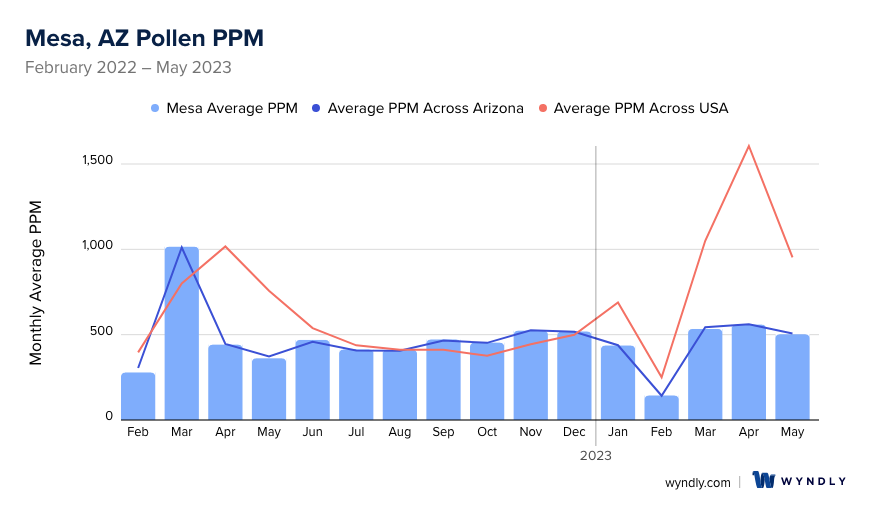
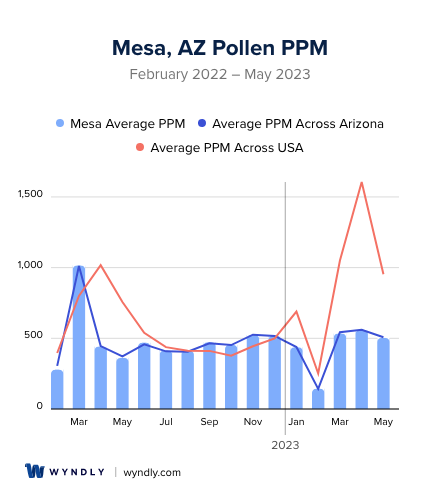
Mesa, AZ Pollen and Allergy Breakdown by Month
Grass
When is grass pollen highest in Mesa, AZ?
August has the highest grass pollen in Mesa, AZ with an average PPM of
When is grass pollen lowest in Mesa, AZ?
December has the lowest grass pollen in Mesa, AZ with an average PPM of
Tree
When is tree pollen highest in Mesa, AZ?
March has the highest tree pollen in Mesa, AZ with an average PPM of
When is tree pollen lowest in Mesa, AZ?
July has the lowest tree pollen in Mesa, AZ with an average PPM of
Weed
When is weed pollen highest in Mesa, AZ?
December has the highest weed pollen in Mesa, AZ with an average PPM of
When is weed pollen lowest in Mesa, AZ?
February has the lowest weed pollen in Mesa, AZ with an average PPM of
Mesa, AZ Pollen Monthly Breakdown by Pollen Type
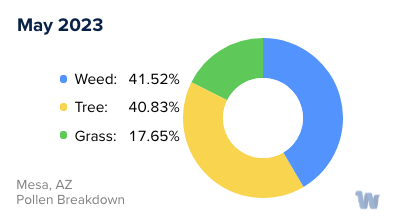
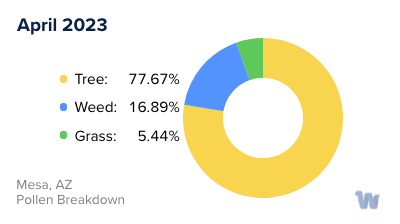
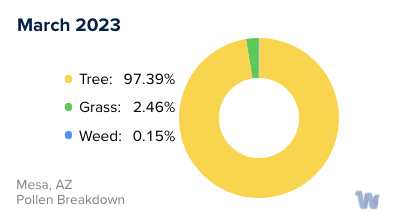
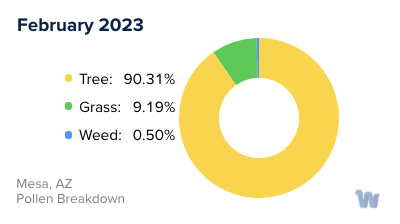
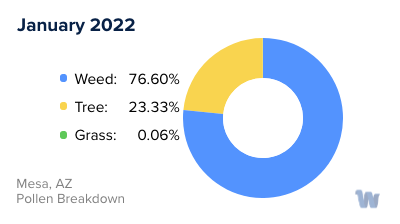
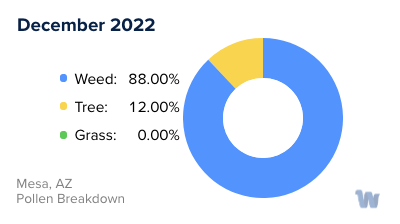
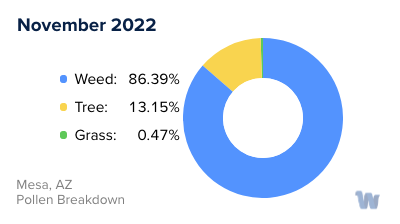
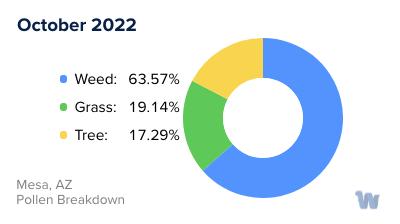
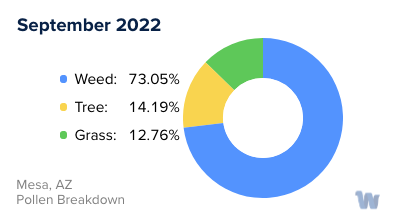
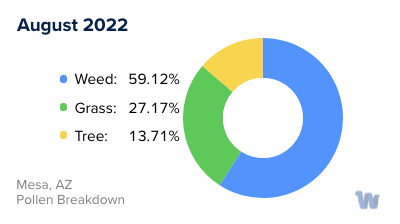
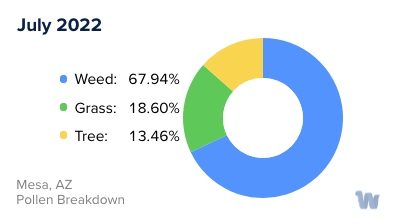
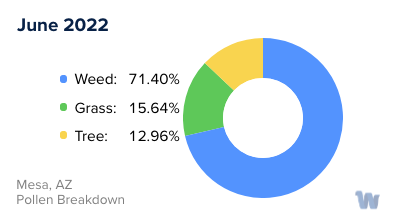
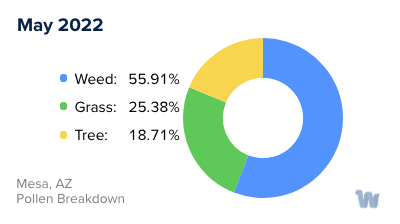
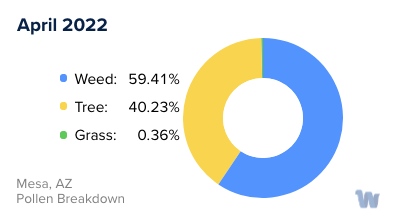
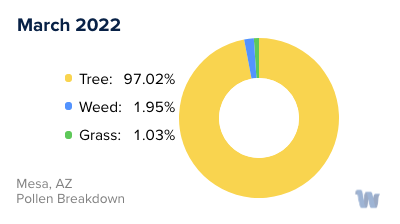
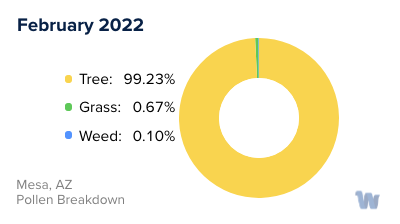
Pollen and Hay Fever in Mesa, AZ
Living in the vibrant city of Mesa, Arizona, brings along with it the joy of abundant sunshine and blue skies. However, for some residents, these beautiful natural elements also bring a less desirable feature - seasonal allergies caused by pollen, commonly referred to as hay fever.
Pollen allergies are a significant concern for many Mesa inhabitants, with the city's unique flora contributing significantly to this phenomenon. The primary culprits behind pollen allergies in this region are trees, grasses, and weeds, each releasing their pollen at different times of the year.
Trees in Mesa, such as Mesquite and Palo Verde, which are native to Arizona, release their pollen predominantly in the spring. The pollen from these trees is microscopic and light, allowing it to be carried great distances by the wind, affecting individuals even if they're far from the tree itself.
On the other hand, grasses such as Bermuda grass and Kentucky bluegrass, common in Mesa's lawns and parks, typically pollinate during the late spring and early summer. These grasses release pollen that can be especially troublesome for allergy sufferers, with even a small amount capable of triggering symptoms.
Finally, weeds are another significant source of pollen in Mesa. In particular, ragweed, a ubiquitous plant in Arizona, blooms and releases its pollen in the late summer and fall. Ragweed pollen is notorious for causing allergies, and because it can travel hundreds of miles in the wind, it is nearly impossible to avoid.
While the seasons of Mesa, Arizona, are filled with the beauty of changing landscapes, they are also marked by the release of different types of pollen. Understanding the types of pollen in each season can provide residents with the knowledge they need to better anticipate and manage their pollen allergies, even in the absence of treatments and remedies. This awareness can help individuals plan their activities accordingly and enjoy the beauty of Mesa to the fullest, despite the seasonal allergies.

